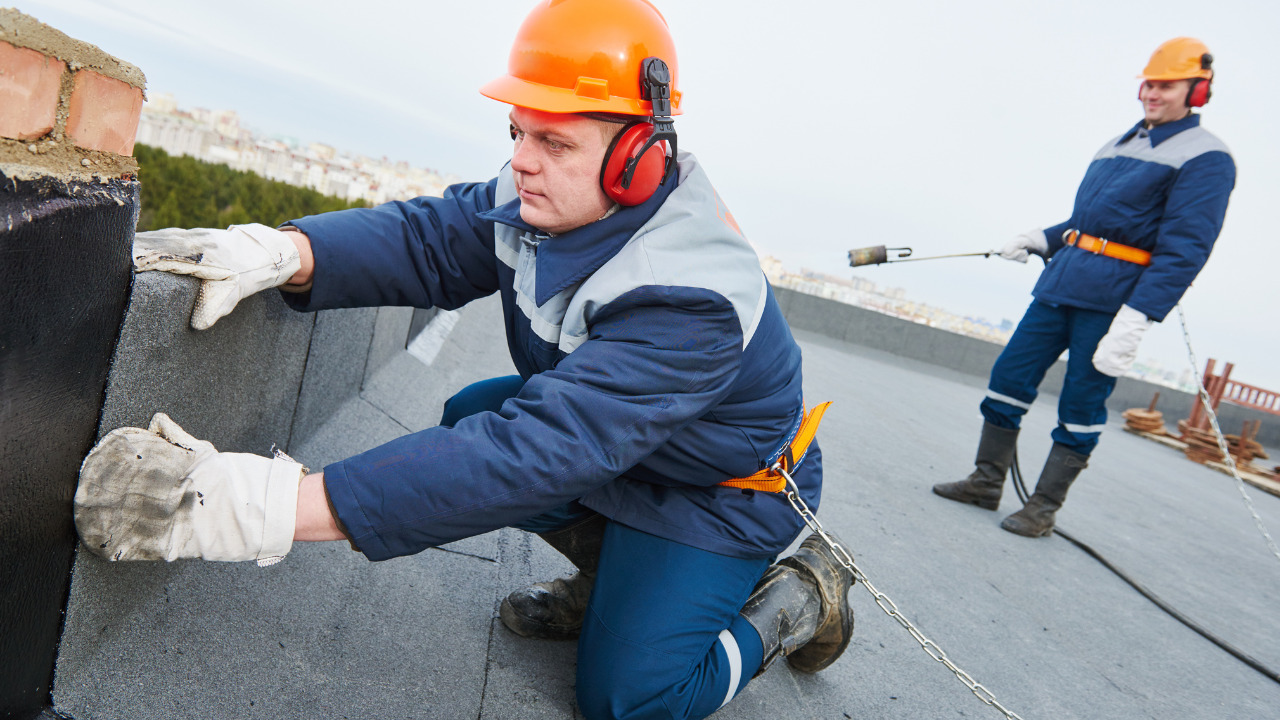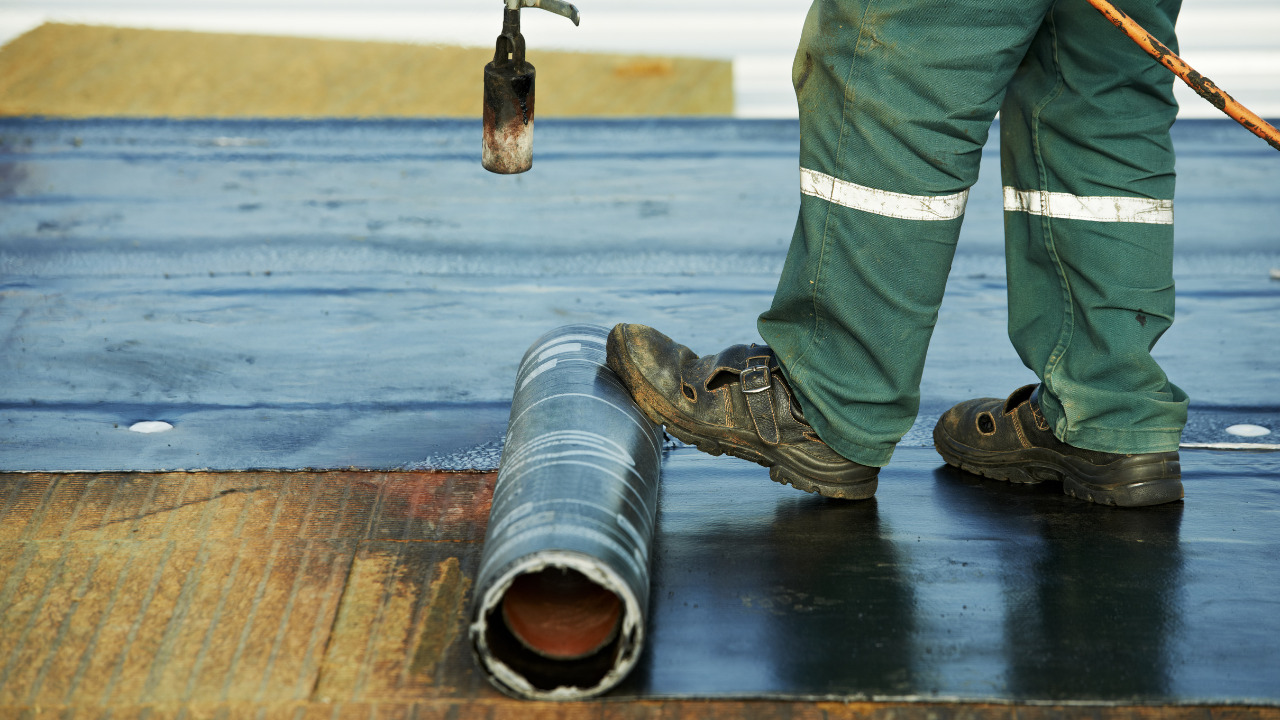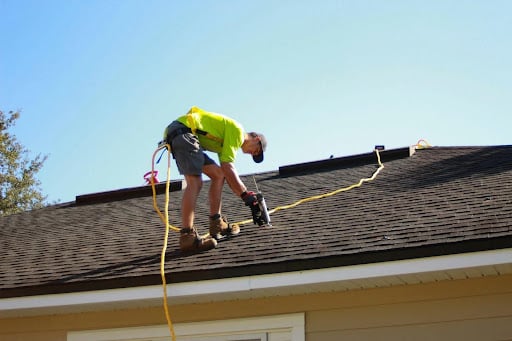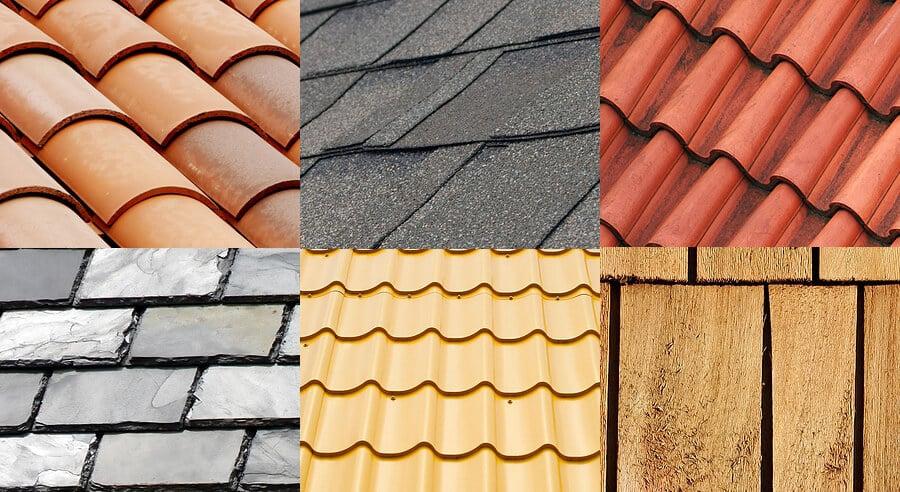Have you ever wondered how to repair a leaky roof from the inside or if such a project is feasible? You already know that PJ Fitzpatrick has a team of roofing experts who can assist you with any roofing repair or, if necessary, roof replacement.
However, if you need a quick fix for a leaky roof and your only alternative is to replace it from the inside, we’d be happy to assist you. If you don’t have access to a ladder or the weather isn’t cooperating, we are here to show you how to repair a temporary leaky roof until you find a permanent one.
One area of your home that requires much attention is the roof. Once it leaks, the roof can repair from both the inside and the exterior. Some homeowners seek outright roof replacement due to the misconception that mending a leaky roof repair from the inside is difficult.
Table of Contents
Is It Possible To Fix A Leaking Roof From the Inside?
You may have heard that fixing leaky roofs inside the home is impossible. But, it is rather straightforward to fix the leak from the attic if it is only a little. Try your best to keep things under control. Things might get considerably worse with too much time or a big downpour.

Regular simple fixes won’t be sufficient to stop structural damage if your roof leaks frequently. Under these circumstances, it may be wiser to plan for the future and invest in a dry permanent roofing system, which will be watertight, more robust, and require no maintenance.
Best Ways To Find Leaks In Roof
Without knowing where the leak is, you can’t stop it from happening. You can call a business offering emergency roofing services or follow the procedures below to determine leaks. Enter your attic – As you may have already guessed, the best place to look for roof leaks on the inside is in your attic.
While inside the attic, remove the insulation from the ceiling and use sponges to wipe away any water that may be standing there carefully. When doing this, place a piece of plywood across the ceiling joists to work from and a bucket to catch the water when it has been squeezed out.
You must now ascertain where the water is coming from. Discovering the source of the leak inside your house and following it up to the roof’s entry point is the best course of action. This can be challenging since most roofs slope, and the leak may be located quite distant from where it is seeping inside.
Remember that the roof’s decking or rafters are where the water normally follows.
Call A Professional

You may always contact an emergency roofing company for professional assistance. You may depend on our staff for whatever assistance you require. Your roof is one of your most significant investments, so keep that in mind. Shielding you from the elements keeps you and your family cozy, secure, and dry.
Repairing a roof leak won’t always be able to save the roof. The best option is to replace your entire roof; in some cases where you have a roof leak, your insurance may pay for your roof replacement.
Steps To Fix the Leaking Roof
There are various solutions for repairing a leaking roof, including Do-It-Yourself options. Still, a curious and professional roofer needs to do it effectively and develop a solution without additional leaks. Let’s review the best techniques to fix your leaky roof instead of going for or advocating a complete replacement.
1) Find The Main Source Of Leakage
Access the leaky area of the roof by going to your attic. First, remove the insulated wall from the drywall panel to remove the standing water. Look for the water and clean it up carefully using sponges. Place a piece of plywood in the ceiling and have a bucket ready to catch the water.

Place your tools and containers carefully, and avoid putting anything on a wet surface.
When attempting to repair a leaking roof, the first step is to identify the source of the leak. To begin, enter the ceiling and trace the route of the falling water as it reaches the ceiling through the roof’s attic. If the ceiling is dark, you can enter using a flashlight.
This process demands patience because the water travels far from the leaking spots before dropping through the roof deck. When it’s raining or showering, you can obtain the best results. Otherwise, you’ll have to wait until the rain stops and dry the leak area before proceeding.
2) Use a Roofing Patch or Tar
Using a roofing patch, tar, and a piece of plywood, create a temporary leak. The roofing tar should be applied with a utility knife to the hole or base of the roof deck.

Attach the plywood or shingle to the tar, put it aside for roofing, and add enough asphalt around the leaking area’s edges. Consider taking this action to strengthen and secure the situation.
Pressing roofing tar into a piece of shingle or plywood is required to plug the leak. Apply any of these materials to the leaking spot with a knife. Please make sure the targets are centered around the leaked patch.
So, it stays put. To get the best results, use a scraper to cover the entire leaking site and surround it with caulking, ensuring it distributes evenly.
3) Check The Roof From Ridge And Outside
The roof should be in fine shape now that the leak has been sealed and covered with caulking, and it should continue to protect your family from wind, snow, and rain. Before you descend from the roof, climb out of the ceiling and inspect the work you’ve just finished to ensure everything is in working order.

You’ll need to inspect the shingles, underlayment, and flashings to see if any are damaged or harmed during the procedure. Check for any signs of wear and tear and also any dangling nails. Use the time to clear the roof of any obstacles and objects requiring more room.
4) What To Do In Case Of No-Access To a Leakage Area?
If you can’t access an attic or figure out where the leak is coming from, you can cover it with a plastic roof covering. In that situation, follow the mentioned-below steps:
5) Get A Plastic Covering For the Roof

Roof plastic isn’t something you already have in your collection. You must go to the hardware store or contact them for assistance. Polyethylene roof covering is available in 4-foot rolls. Purchase some and return home to have it installed on your roof. You’ll also need some 2x4s to use as roof covering anchors.
To go from the top of the roof to the edge, unroll the plastic with an additional length. Cut your covering to length with a utility knife before unfolding it. To cut as straight as possible, reference one of your plastic covers.
What Does The Cost Of Fixing a Leaking Roof From Inside?
A leaky roof can easily be temporarily fixed at a low cost. One of the most affordable building materials available is shingles themselves. You shouldn’t pay much for bituminous paint or roofing tar, either. But keep in mind that more durable fixes will be substantially more expensive.
So, if your roof frequently leaks, a more durable and weather-resistant roofing system, such as dry fixed roofing, may be preferable.
Final Thoughts
It’s important to remember that correcting a leak from the interior or outside only provides temporary relief. Make a note to contact professional assistance later. These repairs can help you save money quickly while preventing you from dealing with a more severe problem.
When looking for a leaky roof, remember that the most common sources of leaks are items that penetrate the roof. So, watch for plumbing and roof vents, chimneys, dormers, solar tube lighting, and anything else comparable. The discussed steps are only temporary.
That’s why to consider hiring professionals to handle your long-term roof repairs. The experts have the most experience in roof repairing and preventing leakage.





